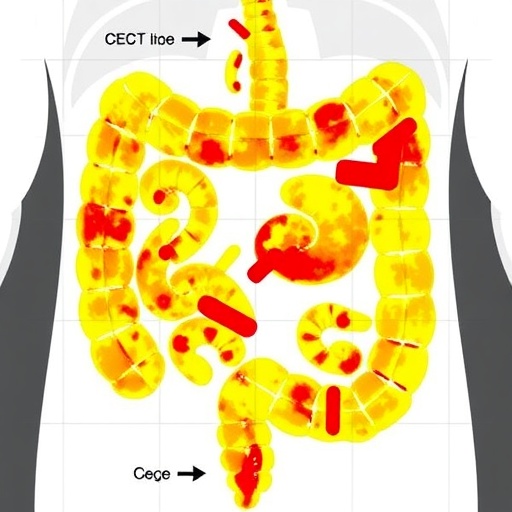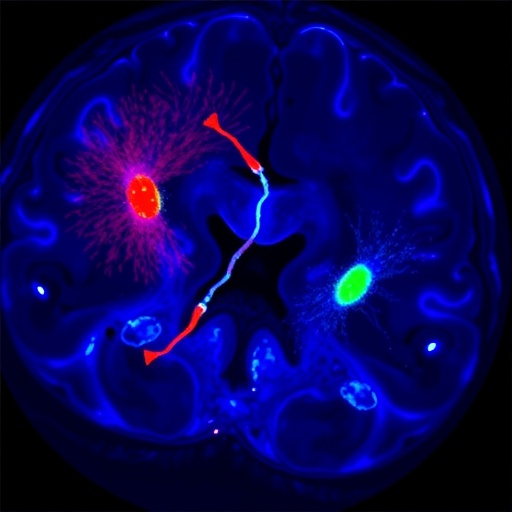A pioneering case study from the Fox Chase Cancer Center is shedding new light on the complex molecular underpinnings of adenoid cystic carcinoma (ACC), a malignancy notorious for its aggressive behavior and diagnostic challenges. Researchers have documented a previously unrecognized fusion gene in a patient’s tumor, broadening the molecular landscape associated with this form of cancer and emphasizing the indispensable role of advanced genomic testing in clinical oncology. This discovery not only deepens our understanding of ACC’s genetic architecture but also has significant implications for diagnostic precision and personalized treatment strategies in the management of salivary gland tumors.
Adenoid cystic carcinoma accounts for a considerable proportion of malignant neoplasms arising from the salivary glands, characterized by a propensity for perineural invasion and a typically dismal prognosis over extended follow-up periods. Conventional diagnostic algorithms heavily rely on histopathological evaluation supplemented by molecular assays targeting characteristic fusion genes. Historically, ACC is defined by the presence of MYB-NFIB or MYBL1-NFIB gene fusions, which serve as hallmark genetic events facilitating tumor identification. However, this new research underscores that such canonical genetic markers are not exhaustive, and alternative fusion gene configurations may be at play.
The patient in question presented with a relatively small, 1.7-centimeter tumor located on the palate, initially classified as a non-specific salivary gland neoplasm following routine histological assessment. It was only after the application of a comprehensive molecular panel that the tumor’s true identity as adenoid cystic carcinoma was elucidated. Remarkably, the panel returned negative results for the classical MYB::NFIB and MYBL1::NFIB fusion genes, challenging preconceived diagnostic parameters and underscoring the potential limitations of relying solely on traditional genetic indicators.
.adsslot_PbqoYV5NWy{ width:728px !important; height:90px !important; }
@media (max-width:1199px) { .adsslot_PbqoYV5NWy{ width:468px !important; height:60px !important; } }
@media (max-width:767px) { .adsslot_PbqoYV5NWy{ width:320px !important; height:50px !important; } }
ADVERTISEMENT
What the molecular analysis did reveal was the existence of a novel fusion gene, NFIB::PHACTR2, previously unreported in ACC pathology. This atypical genetic rearrangement links the NFIB gene — a frequent partner in ACC-associated fusions — with PHACTR2, a gene involved in actin regulation and cell signaling pathways. The identification of this fusion gene suggests that NFIB’s involvement remains a critical determinant in ACC oncogenesis, even beyond its fusion with MYB or MYBL1. This discovery broadens the spectrum of molecular alterations contributing to ACC and hints at a more complex genetic heterogeneity than previously appreciated.
Dr. Shuanzeng “Sam” Wei, MD, PhD, Associate Professor and Medical Director at Fox Chase’s Clinical Genomics Laboratory, highlights the clinical importance of this finding. “This case reveals a crucial diagnostic pitfall,” Dr. Wei explains. “The absence of the conventional MYB or MYBL1 fusions should not preclude a diagnosis of adenoid cystic carcinoma, especially in the presence of an NFIB fusion partner. Recognizing NFIB::PHACTR2 as a diagnostic marker can drastically improve diagnostic accuracy, particularly in unusual or ambiguous tumor presentations.”
From a clinical management standpoint, acknowledging this fusion gene’s role is vital in guiding surgical and therapeutic decision-making. ACC tumors exhibit a well-documented propensity to infiltrate neural structures, often necessitating radical excisions that include removal of affected nerves to achieve clear surgical margins. Misdiagnosis or delayed recognition may result in suboptimal surgery, incomplete tumor resection, and ultimately, poorer patient outcomes. Thus, molecular profiling emerges as a cornerstone of precision oncology, empowering clinicians to tailor interventions appropriately.
Moreover, this case exemplifies the burgeoning field of personalized medicine where molecular diagnostics not only inform prognosis but also open avenues for targeted therapies. While surgical resection remains the primary treatment modality, emerging molecular insights could facilitate the development of novel therapeutic agents targeting fusion-mediated oncogenic pathways. As researchers continue to unravel the functional consequences of NFIB::PHACTR2 and similar fusions, new pharmacologic vulnerabilities may be identified, offering hope for improved therapeutic efficacy in this challenging disease.
Despite these advances, molecular testing remains limited in accessibility, particularly outside of specialized cancer centers. Many smaller community hospitals may lack the resources or expertise to perform comprehensive genomic analyses, potentially hindering accurate tumor classification and optimal care. Dr. Wei advocates for referring complex or atypical cases to academic institutions or dedicated cancer centers equipped with state-of-the-art molecular diagnostics, ensuring patients receive the benefits of precise pathology and informed treatment planning.
The report, published in the April 2025 issue of Virchows Archiv— the prestigious journal of the European Society of Pathology—cements the role of advanced genomic techniques in contemporary oncology. It also serves as a clarion call to the pathology community to expand diagnostic panels and remain vigilant for novel fusion events that defy traditional paradigms. By disseminating such findings, the Fox Chase team aims to promote broader awareness among pathologists and oncologists worldwide.
In addition to its diagnostic value, the discovery of NFIB::PHACTR2 fosters a deeper understanding of ACC’s molecular biology. NFIB’s recurring involvement as a fusion partner underscores its centrality in tumorigenesis. PHACTR2, meanwhile, although less characterized, is implicated in actin cytoskeleton modulation and intracellular signaling, processes integral to cellular motility and invasion—hallmarks of ACC’s aggressive phenotype. This fusion may contribute to the invasive capabilities of ACC, warranting further functional studies to elucidate its oncogenic mechanisms.
The implications extend beyond just a single tumor type: this case exemplifies the evolving concept that cancer biology is governed by a constellation of genetic aberrations, often context-dependent and variable across patients. As sequencing technologies become more sophisticated and cost-effective, the identification of novel driver mutations and fusion genes will increasingly refine cancer diagnosis and therapy. This molecular granularity underpins the shift towards truly individualized oncology, where the molecular signatures of tumors dictate clinical management.
Ultimately, this groundbreaking research highlights that while traditional markers remain indispensable, the landscape of cancer diagnostics is expanding. Recognizing atypical genetic alterations like NFIB::PHACTR2 fusion empowers clinicians to avoid diagnostic pitfalls and optimize patient care. It reaffirms the necessity for integrating comprehensive molecular testing into the diagnostic workflow of salivary gland neoplasms, especially when conventional markers are absent. This integration promises to enhance prognostication, tailor therapeutic approaches, and potentially improve survival outcomes for patients facing this formidable disease.
As molecular medicine advances at an unprecedented pace, discoveries like this emphasize that cancer is not a monolithic entity but a highly heterogeneous constellation of diseases. Continued investment in molecular pathology and collaborative research endeavors remain pivotal in unraveling these complexities, ultimately translating genomic insights into meaningful clinical benefits. The Fox Chase Cancer Center’s contribution thus marks a significant milestone in the relentless quest to decode and defeat adenoid cystic carcinoma.
Subject of Research: People
Article Title: NFIB::PHACTR2, a novel atypical fusion gene identified in adenoid cystic carcinoma of the palate
News Publication Date: 21-Apr-2025
Web References: 10.1007/s00428-025-04107-4
References: Virchows Archiv, European Society of Pathology
Keywords: Cancer; Mouth; Salivary glands
Tags: Adenoid cystic carcinoma diagnosisadvanced genomic testingcancer research case studygenetic architecture of ACChistopathological evaluation in oncologymolecular underpinnings of cancerMYB-NFIB gene fusionnovel fusion gene discoveryperineural invasion in tumorspersonalized treatment strategiesprecision medicine in cancersalivary gland tumors






